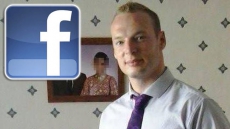Sending sexually explicit images via phones or tablets is now a normal activity among teenagers, leading to increased sexual behaviour among them, found a study.
Sexting may serve as a gateway to actual sexual behaviour or as a way to indicate one's readiness to take intimacy onto the next level, researchers noted.
"Sexting is not strictly limited to at-risk teens any more. The results indicate that sexting may precede sexual intercourse in some cases and further cements the idea that sexting is a credible sign of teenage sexual activity," explained Jeff Temple, associate professor and psychologist at the University of Texas' medical branch at Galveston.
The findings are part of an ongoing six-year investigation of an ethnically diverse group of adolescent students from south-east Texas.
The teenagers completed anonymous surveys detailing their history of sexting, sexual activity and other behaviour throughout the six years.
Researchers found that the odds of being sexually active as high school juniors was slightly higher for youth who sent a "sext" or naked picture of themselves the previous year, compared to teens who did not "sext".
"We now know that teenage sexting is fairly common. For instance, sexting may be associated with other typical adolescent behaviour such as substance use. Sexting is not associated with either good or poor mental well being," Temple informed.
Further, researchers did not find a link between sexting and risky sexual behaviour over time which may suggest that sexting is becoming a part of growing up.
Researchers also found that actually sending a "sext" was the important part of the link between sexting and sexual behaviour, as opposed to merely asking or being asked for a nude picture.
"Sending a nude photo may communicate to the recipient a level of openness to sexual activity, promote a belief that sex is expected, and serve to increase sexual advances, all of which may increase the chance of future sexual behaviour," concluded study co-author Hye Jeong Choi.
The findings were published in the journal Pediatrics.





